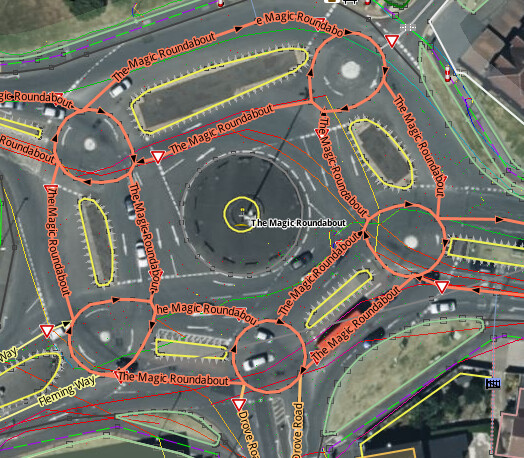That is probably why we don’t bother with mini-roundabouts: people would still not go around each other in this situation. The dot in the middle would simply be ignored. We do have small roundabouts, where traffic barely has to move to pass it straight-on, but the centre island (no truck apron, just kerb) always has signpoles with a roundabout traffic sign facing the approaches, and all allowed traffic has to pass that on the correct side according to the oneway arrows of the sign. So in fact: no oneway arrow sign, no roundabout.
And, we never have automatic priority on the junction. So in fact: no give-way signs, no special priority, just the default priority for the righthand side.
For road designers this means: if you can’t put a roundabout sign in the dot, because some vehicles need the space to pass the junction, you either ban those vehicles from the roads involved, or you simply can 't have a roundabout there.
Which, for OSM, means: it’s junction=roundabout only if there are giveway signs on all approaches AND roundabout signs in the middle, face clearly visible from all approaches.
Announcement signs in NL will graphically show the upcoming roundabout, but do not give it any legal status. So the sign showing the layout of the Swindon Magical Roundabout would not be enough; in NL, each of the mini-roundabouts would have to have its own roundabout sign. Which in fact in Swindon is sort of arranged by the large arrows on the surface. I don’t know if those arrows have any legal status, but they do get the message across. So I think OSM could map these access roundabouts as junction=roundabout.
Then again, probably, our OSM based navigation would announce “go right on the roundabout, third exit” which would make no sense to the driver, who thinks that the whole square is the roundabout and that the navigation should say “first exit”. Which explains the idea to have no roundabout tagging at all at the Magical Roundabout, and just get the connectivity right with correct oneway and priority tagging, while staying as close to the actual geometry as possible.


